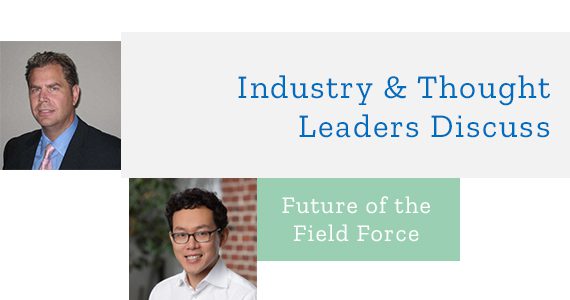Insights with Innovators
The Customer Experience Roadmap is Paved in Empathy & Emotion

Summary
Putting Emotion at the Center
Decisions about health care are inherently emotional. Whether a patient is finally getting the treatment they need or taking the first step toward a diagnosis, these important moments carry with them significant expectations and emotion. These moments create the patient journey. But across our industry, understanding those emotions and authentically connecting with these moments can still be a challenge.
Scott Vedder, a Senior Facilitator with the Disney Institute, suggests we start with the following questions to create stronger, authentic bonds with our customers:
- What emotions do you want your patients, providers, colleagues, and partners to feel when it comes to your organization and your work?
- What actions can you take to evoke those positive emotions?
- What stories can you tell?

Christine Yeh, Vice President of Customer Experience at AbbVie, started her career at Proctor & Gamble with responsibility for marketing their laundry products. In those early years, she learned that even with laundry detergent, products are associated with emotional benefits. When you think of your clothes or the brand of detergent you use, it conjures up thoughts about your work, your family, your memories and how you care for them.
Using Dreft for your newborn or using Tide to clean grass stains from your son’s baseball uniform – these simple daily actions have emotions intrinsically connected to them. Understanding these moments of impact for your brand, independent of what industry you find yourself in, will help you understand what you need to know as a marketer.
“Emotion is at the heart of everything we do.” Many of us have passed through the turnstiles at Disney’s Magic Kingdom while being invited to “have a magical day!” Scott explained why Disney’s approach to creating emotional connections isn’t magic. It’s practical.
The Gallup Organization has published research suggesting that emotionally engaged customers are at least three times more likely to recommend and at least three times more likely to re-engage with a brand. Part of Disney’s business case for investing in service is their belief that the power of service lies in its ability to create both an emotional connection and a rational connection which together can impact economic behaviors and outcomes. Guests feel positive about their experience, and they are more likely to return and share those experiences with others.
Disney’s common purpose – We Create Happiness – is embedded throughout the organization’s culture, with top leadership and customer-facing roles as well as back-office Cast Members.
Petco has a similar customer-centric mission: Doing what’s best for pets and the people who love them. They have reimagined their retail stores as Pet Care Centers, creating a fully integrated health and wellness company for pets and “pet parents” with a focus on service, empathy, and trust. Making decisions for your pet’s wellbeing is not unsimilar to making health decisions for your family. These decisions are rooted in emotion.
Integrating Customer & Colleague Experience
At both Disney and Petco, the commitment to harnessing empathy and emotion to create positive customer experience starts from within. Building a customer-centric culture requires a holistic view of how employee experience and customer experience intersect.
At Petco, their focus on their people and their culture “has been what has transformed the company”, according to Jenny Wolski, Senior Vice President of Omnichannel Experience. Creating a culture where employees feel heard and valued has had a direct impact on their business. As employees become happier, they become more focused on wanting to deliver exceptional experiences, creating a flywheel effect of compounding returns.
Disney’s belief in the power of making emotional connections in service is the same for external service to Guests as it is for internal service to Cast Members. The company has an expectation that their leaders connect to Cast Members in personal ways. Leaders are expected to exemplify their common purpose every single day and to teach and embed the importance of emotional connection into everything they do.
The focus of employee onboarding is to create a culture in every area – IT, customer service, leadership – where their common purpose comes to life, and throughout the organization they find ways to help employees stay connected to customers. At their call centers, they have a live feed from Main Street USA playing on monitors to help agents recognize the impact they have had by helping guests plan their visits and celebrate that they made that emotion possible.
The Voice of Your Customer
Christine anchored the conversation around the need for deep customer insight that goes beyond traditional customer satisfaction metrics. “At the end of the day, you have to live the life of your consumer. You can’t just rely on surveys because there is a lot they won’t tell you.”

Ryan Billings, Oncology Digital Customer Experience Lead at GSK, suggests that Pharma can apply a variety of tools and techniques to listen to customers. “Customers tell us if something is broken either directly or indirectly through other channels.” Social listening can be very helpful to understand what patients and providers are thinking and talking about.
Design thinking and innovation exercises can be helpful to further determine what is broken and hone in on the business problems that need attention vs rushing to find solutions. Take the time to ideate.
Ryan feels that Pharma can continue to close the CX gap by focusing on empathy. Let customers have a seat at the table; ask them what they want. Creating excellent experiences requires that we stop designing for ourselves and start designing for customers. “Stop collecting demographic data. Make the move to psychographic intelligence to understand what your customers value and what’s important to them so that you can better deliver experiences and content to them.”

Jessica Saperstein, Head of Customer Experience at Novartis, supported the importance of activating new sources of customer insight to help drive business and brand strategy. Creating a closed loop approach to feedback can ensure that customer input is used to understand issues and resolve them. As you collect feedback across social channels, conversations in the field or direct from customers, you can start to see and hear themes which allow you to change processes to avoid these problems in the future.

Daniel J. Gandor, Director, US Customer Experience, Oncology & Specialty at AbbVie, compares good CX or omnichannel marketing to an orchestra. Each instrument or team or individual, needs to play their own part. CX leaders need to act like the conductor, bringing the best from each department, function, and person together to create alignment, knock down barriers and facilitate collaboration.
At AbbVie, they have integrated brand teams (IBTs) which bring brand marketing, customer experience, medical affairs, IT and other key functions together in one room at the same time on a regular basis to address and respond to the voice of the customer. Having the power of a cross-functional team allows them to “quickly and with agility solve customer needs and issues when they arise.”
At Novartis, Agile ways of working are being employed in content and experience design to bring benefits to customers more quickly. “You don’t have to wait for the experience to be at the end state”, says Jessica, you can change and improve the experience as you go to deliver value along the way.
Putting Advice into Action
Wondering how to initiate your own customer-centric transformation?
Our experts have these words of advice: “Just start.”
Jenny summed it up: “It’s not always going to be perfect. Start listening, learning, and actioning…and…people will start to get excited about whatever transformational journey you are on. Know that at every step of the way you are making a difference in someone’s life.”

“Expectations for experiences are being set by all of the places people go when they are not busy being doctors, nurses, and patients.” – Richard Schwartz, Life Science Industry Practice Lead, Medallia
Our Summit Experts

Daniel J. Gandor, Director, US Customer Experience, Oncology & Specialty, AbbVie

Jessica Saperstein, Head of Customer Experience, Novartis

Scott Vedder, Senior Facilitator, Disney Institute

Richard Schwartz, Life Science Industry Practice Lead, Medallia

Christine Yeh, Vice President, Customer Experience, AbbVie

Ryan Billings, Oncology, Digital Customer Experience, GSK

Jenny Wolski, Senior Vice President, Omnichannel Experience, Petco






